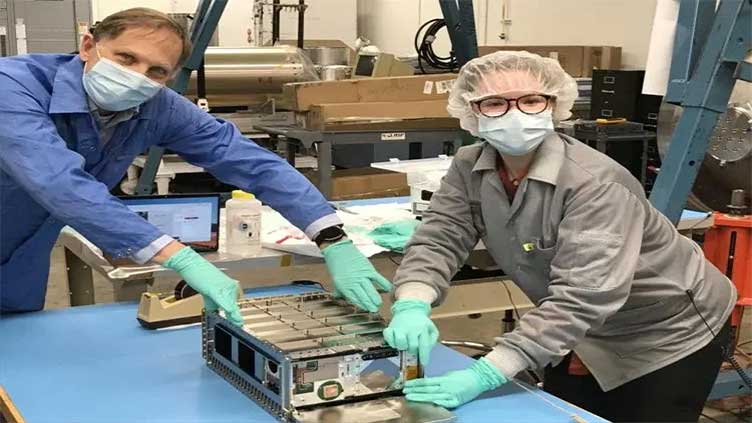Laptop-size spacecraft reveals new details about universe's biggest, hottest planets

Technology
The spacecraft could help unravel how planets form across the universe
(Web Desk) – A tiny spacecraft — known as the Colorado Ultraviolet Transit Experiment, or CUTE for short — has managed to unveil new information about the atmospheres of "hot Jupiters," the largest and hottest sort of planet in the universe.
Developed by the University of Colorado Boulder’s Laboratory for Atmospheric and Space Physics and NASA, CUTE launched to space in September 2021.
Costing $4million, CUTE is what's known as a Cubesat, a kind of mini-satellite about 14-inches long — or in this case, the size of a "family-sized box of Cheerios."
In research presented at the 2023 American Geophysical Union meeting, researcher Kevin France detailed how CUTE's ultraviolet telescope was used to observe several hot Jupiters, some of which are hundreds of light-years away from Earth.
Described as one of the “hottest and angriest group of planets in the galaxy,” hot Jupiters are around the mass and size of Jupiter but orbit closer to their star than Mercury does to the Sun.
One mystery CUTE could help solve is how these planets' atmosphere's change so close to their stellar companion. When the hot Jupiters orbit their star, their atmospheres puff up — but CUTE shows that some are losing their atmosphere because of their proximity to their star, while others seem more resilient.
"The planets seem to be coming in all of the flavors," said France in a statement.
Understanding how planets evolve — even those that look very different to our planet — could further our knowledge about Earth-like worlds, France explained.
"There’s a lot of evidence that suggests that super Earths begin as planets the size of Neptune with large, puffy atmospheres, which then lose so much mass that all that is left is the rocky core and possibly a thin atmosphere," France said.


